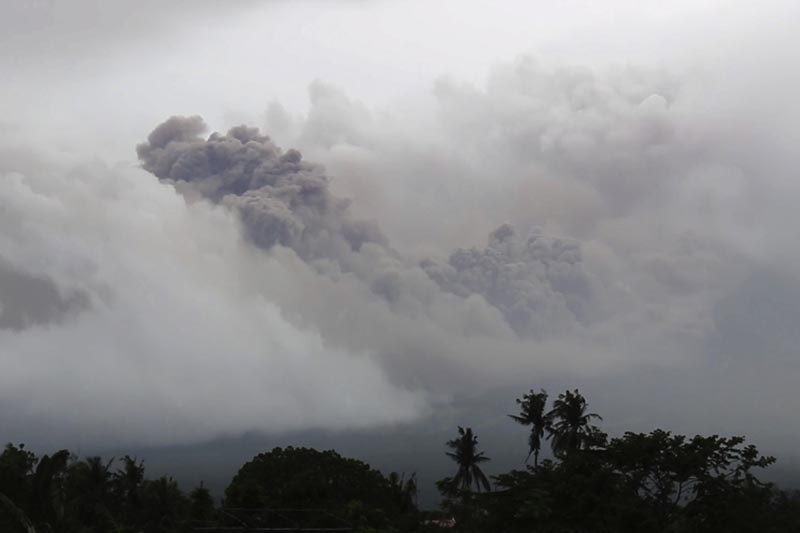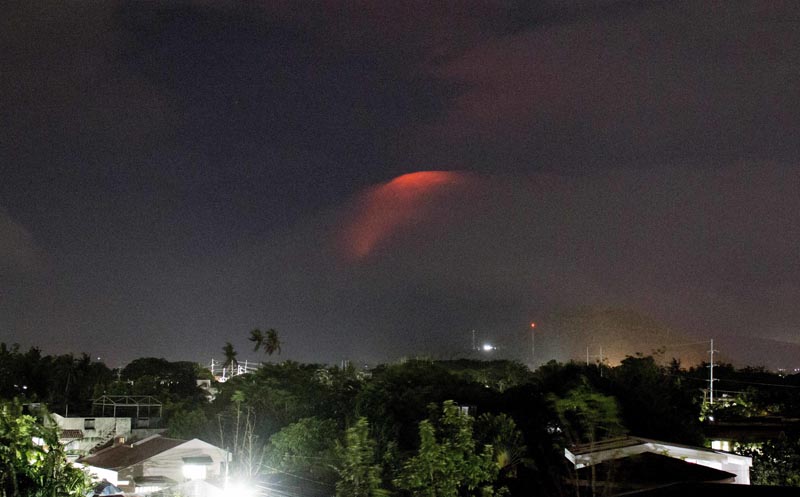Lava flowing from Philippine volcano, thousands evacuated
LEGAZPI, PHILIPPINES: Nearly 15,000 people have fled from villages around the Philippines' most active volcano as lava flowed down its crater Monday in a gentle eruption that scientists warned could turn explosive.
The Philippine Institute of Volcanology and Seismology increased the alert level for Mount Mayon late Sunday to three on a scale of five, indicating an increased prospect of a hazardous eruption "within weeks or even days."
Lava flowed at least half a kilometer (less than half a mile) down a gulley from the crater on Monday morning and ash clouds appeared mid-slope as lava fragments rolled down, said Renato Solidum, who heads the volcano institute. It was hard to track down the lava flow given the thick clouds shrouding the volcano.
Molten rocks and lava at Mayon's crater lit the night sky Sunday in a reddish-orange glow despite the thick cloud cover, leaving spectators awed but sending thousands of residents into evacuation shelters.
Disaster-response officials said more than 14,700 people have been moved from high-risk areas in three cities and four towns in an ongoing evacuation. People in the danger area have put up huge white crosses in the past in their neighborhoods, hoping to protect their lives and homes.
"There are some who still resist but if we reach alert level four, we'll really be obligated to resort to forced evacuation," Cedric Daep, an Albay emergency official, told The Associated Press. Level four signifies the volcano could erupt violently within days.

Mayon lies in coconut-growing Albay province about 340 kilometers (210 miles) southeast of Manila.
Three steam-explosions since Saturday have spewed ash into nearby villages and may have breached solidified lava plugging the crater and caused lava to start gushing out, Solidum said.
With its near-perfect cone, Mayon is popular with climbers and tourists but has erupted about 50 times in the last 500 years, sometimes violently.
In 2013, an ash eruption killed five climbers, including three Germans, who had ventured near the summit despite warnings of possible danger.
Experts fear a major eruption could trigger pyroclastic flows — superheated gas and volcanic debris that race down the slopes at high speeds, incinerating or vaporising everything in their path. More extensive explosions of ash could drift toward nearby towns and cities, including Legazpi city, the provincial capital, about nine miles (15 kilometers) away.
The bulletin sent Sunday night said a hazardous eruption was possible within weeks or even days. It said the glow in the crater signified the growth of a new lava dome and that the evacuation zone should be enforced due to the dangers of falling rocks, landslides or a collapse of the dome.
Airplanes have been warned not to fly close to the volcano.
Mayon's first recorded eruption was in 1616. The most destructive in 1814 killed 1,200 people and buried the town of Cagsawa in volcanic mud. The belfry of a Cagsawa church juts out of the ground in a reminder of Mayon's deadly fury and has become a tourist attraction.






